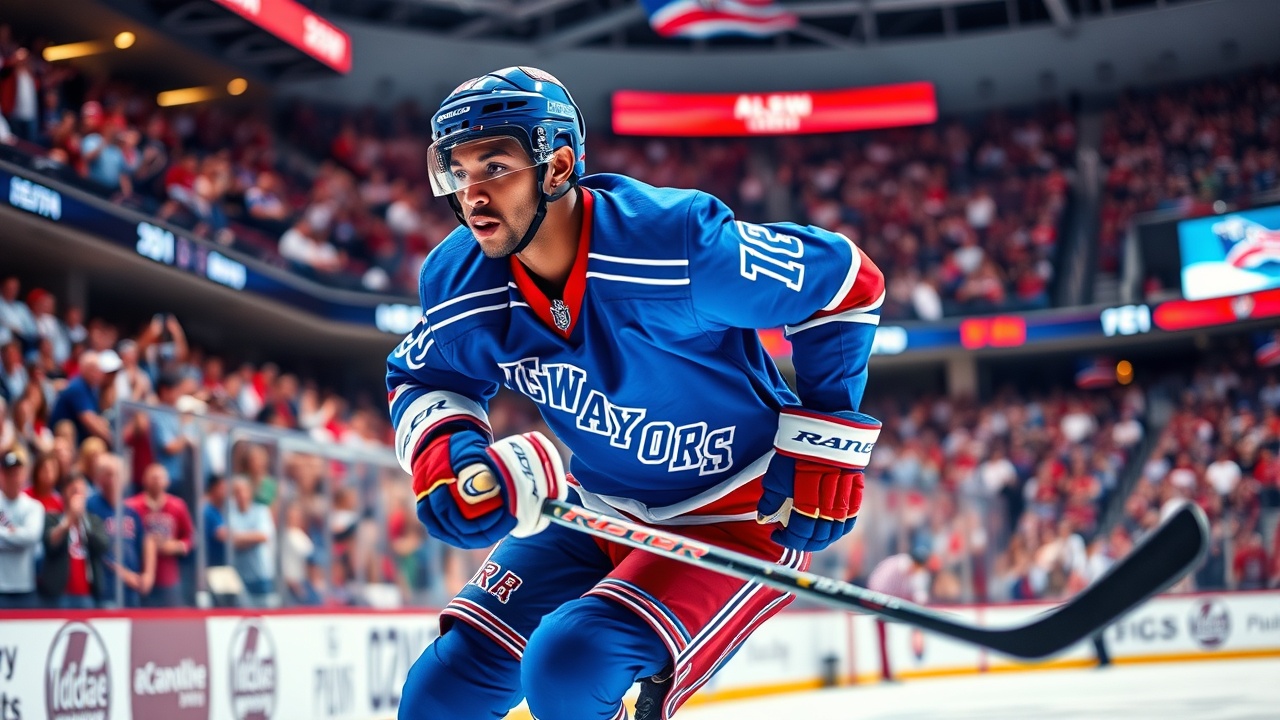K’Andre Miller: A Promising Talent
In recent seasons, K’Andre Miller has stood out as a promising defenseman for the New York Rangers, showcasing impressive skating abilities alongside a long reach. His talents have enabled him to secure a spot on the team where he has often demonstrated potential as a two-way player.
Inconsistency and Contract Implications
Despite these bright spots, Miller has not yet reached his full potential, particularly in terms of providing the consistency expected from a reliable member of the Rangers’ top four defensemen. This situation is further complicated as his two-year contract is nearing its expiration in the coming weeks.
While the Rangers might be hesitating to commit to Miller for the long term, it raises the likelihood that another organization could see value in his services. Teams are beginning to utilize offer sheets more aggressively, particularly after seeing successes like those with Philip Broberg and Dylan Holloway in St. Louis. This market reality places additional pressure on the Rangers as they look to rejuvenate their roster following a lackluster performance in the 2024-25 season and make significant adjustments on the blue line.
Strengths in Miller’s Game
What facets of Miller’s game work in his favor, and how should the Rangers approach his future? Miller possesses natural athleticism, particularly in his skating, characterized by a powerful stride and burst speed. While scoring is not his forte, he contributes effectively to puck movement and transition from defense to offense, which aided the Rangers in generating scoring opportunities during his ice time.
Defensively, Miller is equipped to contend with elite offensive players. His agility and reach facilitate effective playbreaking, limiting opponents’ chances. Highlights of his capability were evident when he partnered with Adam Fox earlier in the season, resulting in a positive goal differential and a strong expected goals figure during their shared ice time.
Challenges and Areas for Improvement
However, Miller’s performance has not been without significant struggles. His defensive metrics faltered when he switched back to playing alongside Jacob Trouba, leading to a rough stretch where the pair failed to score any points while being outscored significantly. This inconsistency highlights deficiencies in Miller’s game, which necessitated reliance on his partner for stabilization—something he did not consistently deliver when opportunities arose.
Over the past season, Miller’s defensive play, particularly regarding entry denial, weakened, allowing opponents easier access during offensive transitions. His decision-making in high-pressure situations came into question, with some poor reads compromising his positioning and ability to effectively challenge shooters. Turnovers also plagued his performance, underscoring the need for improvement in puck management.
Navigating Contract Negotiations
For the Rangers, determining Miller’s market value is complex, especially within the context of a rising salary cap. One approach teams often take with a restricted free agent (RFA) is to offer a bridge deal—this would afford the team additional time to evaluate the player’s performance while managing cap space. In Miller’s case, an extension could allow the organization to gauge his progress under new coaching while safeguarding their financial interests.
Analyses predict that a two-year extension could average around $5.43 million annually, potentially reflecting below his worth in today’s market. However, signing him to another short-term deal might push him closer to unrestricted free agency, ultimately risking the team’s leverage in future negotiations.
Alternatively, projections suggest a more favorable outcome for both parties could be a four-year contract averaging approximately $5.94 million per season, allowing the Rangers to retain a key asset during a crucial portion of his career, particularly between the ages of 23 to 29.
Potential Outcomes and Future Considerations
Despite the predictable turbulence surrounding his upcoming negotiations, teams might still pursue Miller aggressively—especially if he becomes available through an offer sheet that could yield significant compensation for New York. Other franchises, like the Columbus Blue Jackets and Calgary Flames, might view him as a crucial piece for their defensive line, while contenders might also see potential value if they can accommodate his skills within their existing roster frameworks.
Navigating this conundrum presents a challenge for the Rangers. While Miller undeniably possesses franchise-caliber potential, the reality remains that results will dictate future decisions in this results-oriented league. With uncertainty clouding his past performances, contract complexities, and the looming risk of an offer sheet, Miller’s future with the Rangers hangs in the balance.




